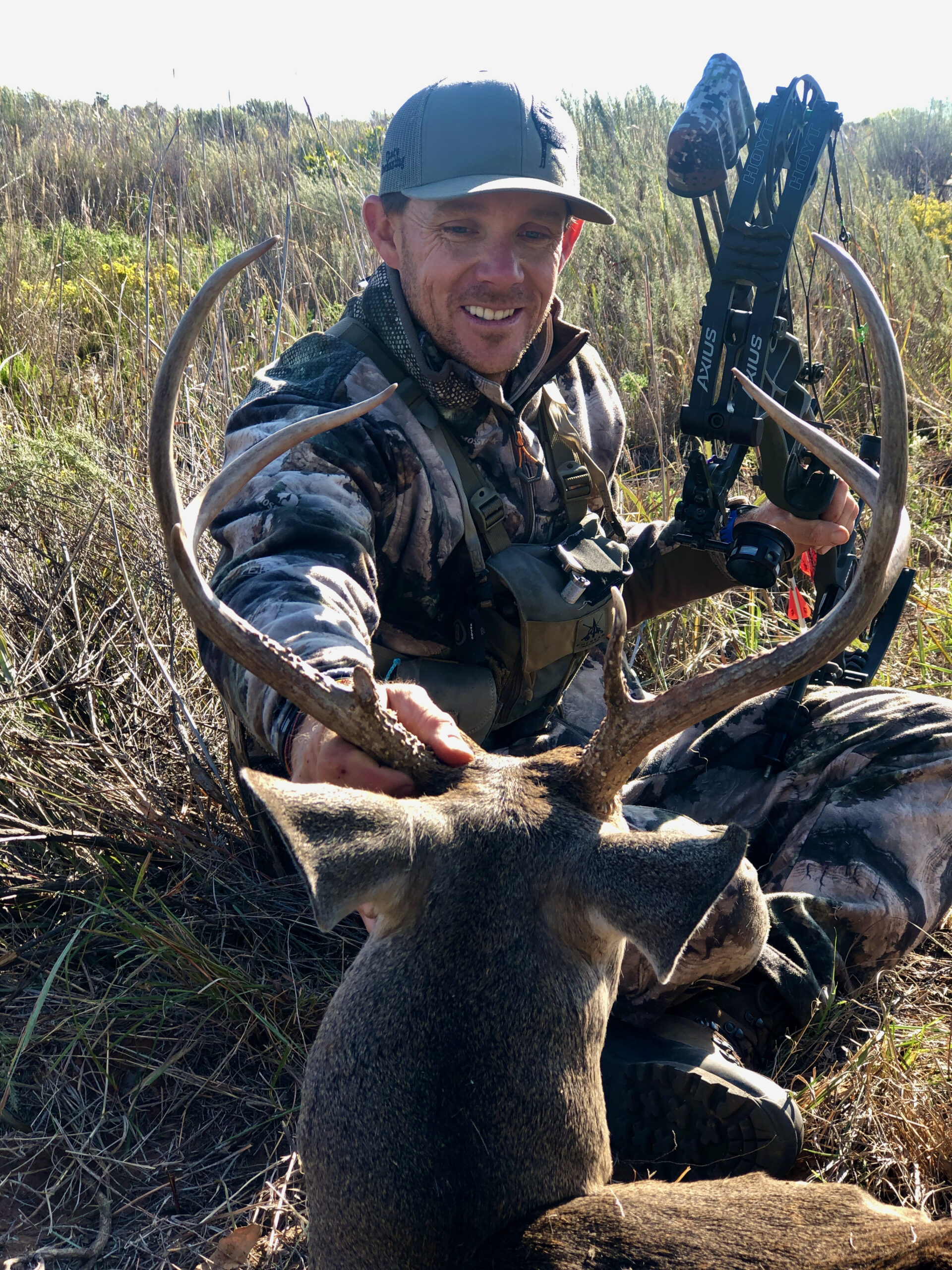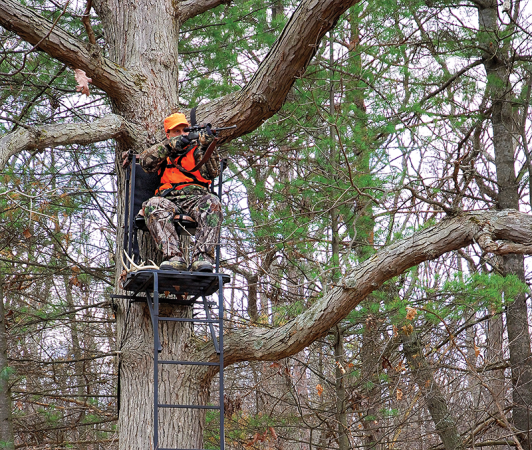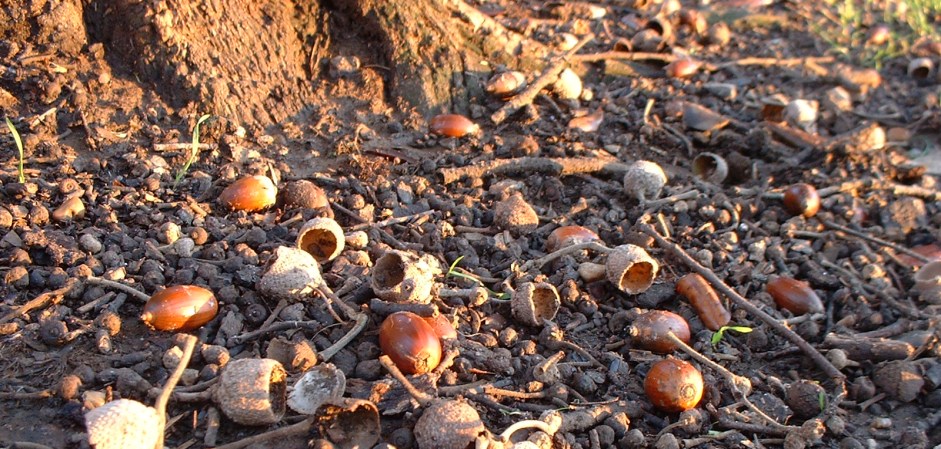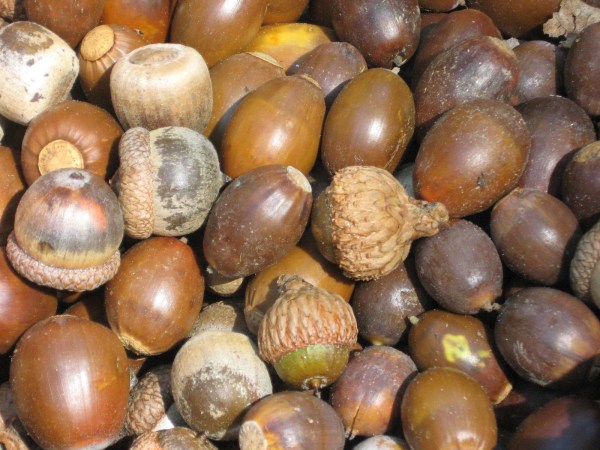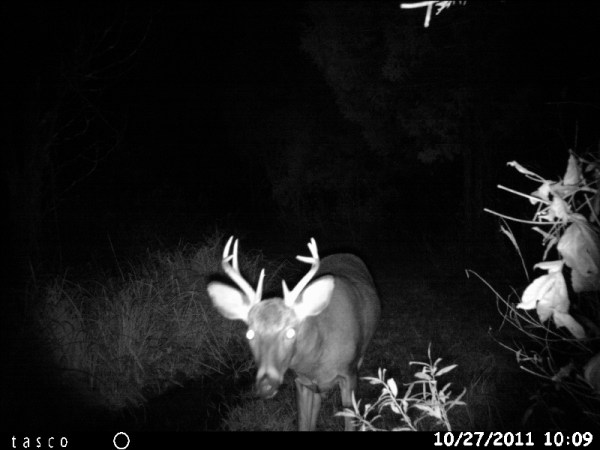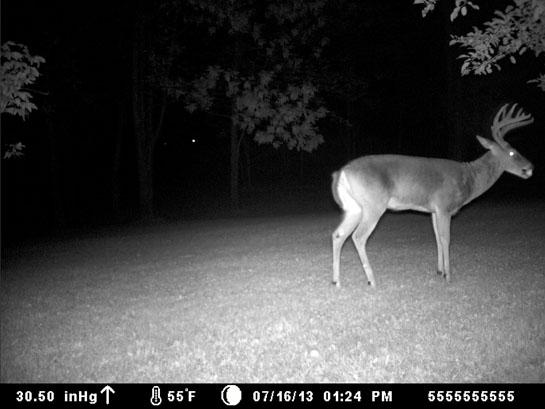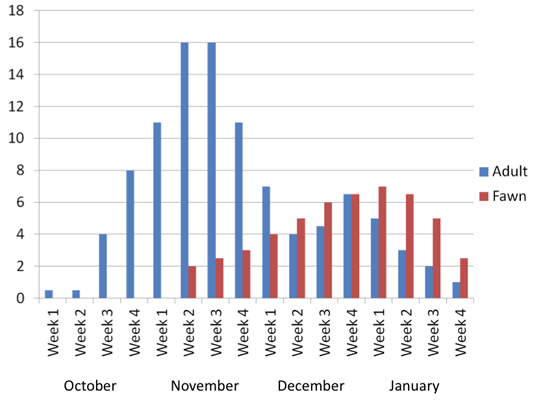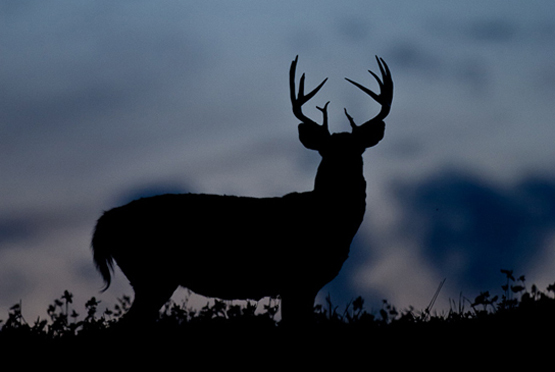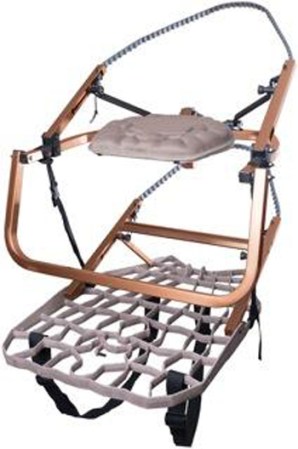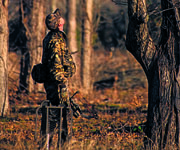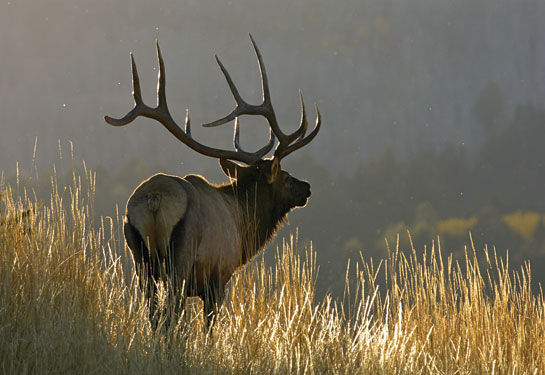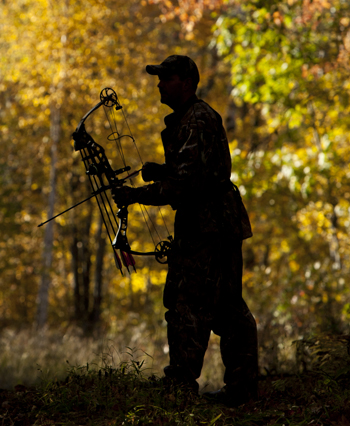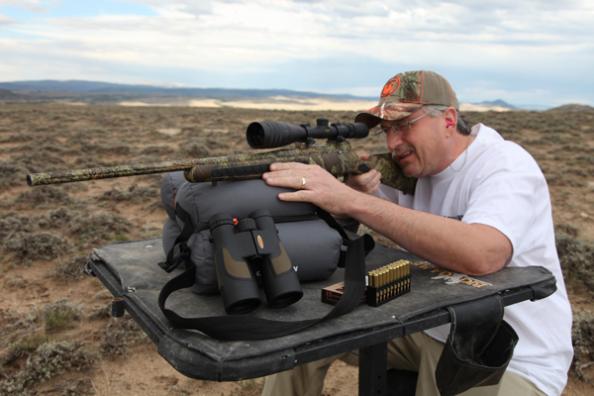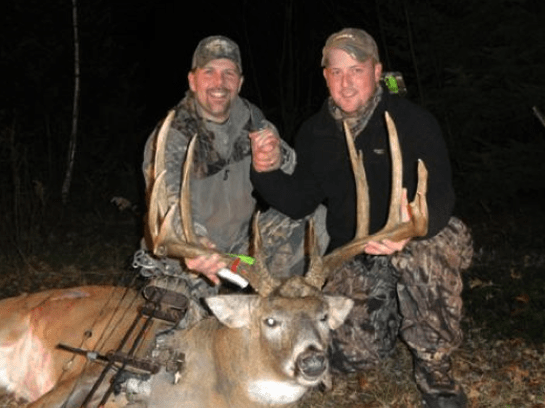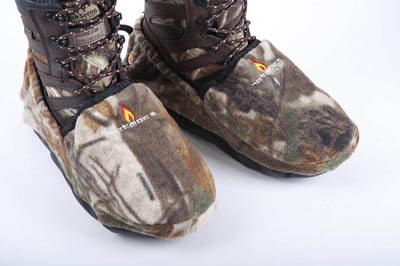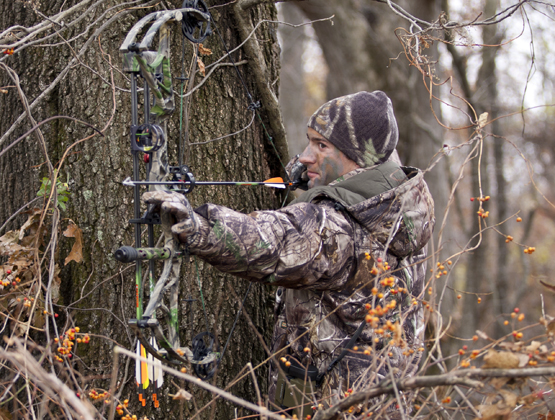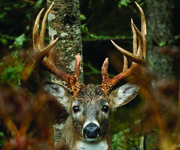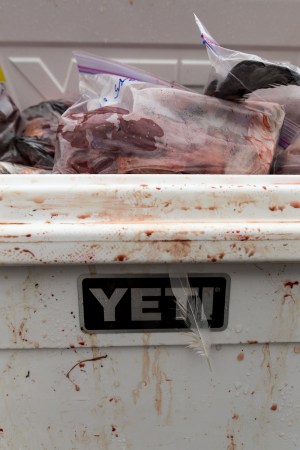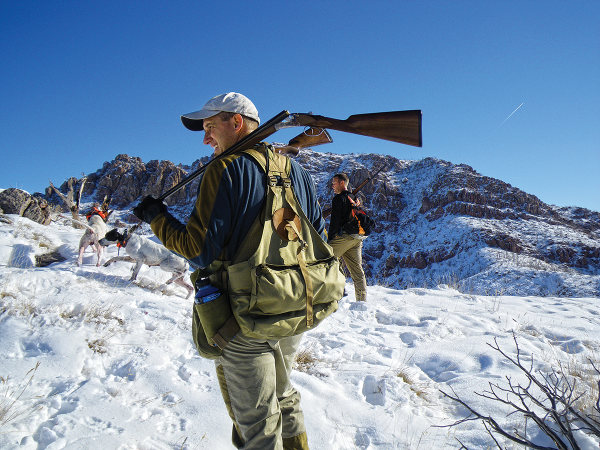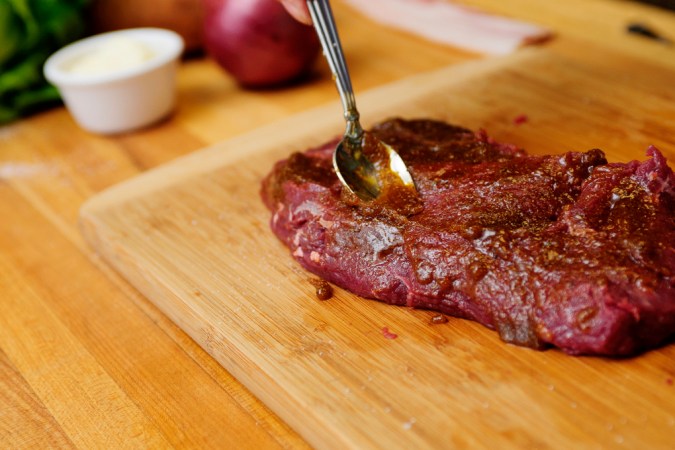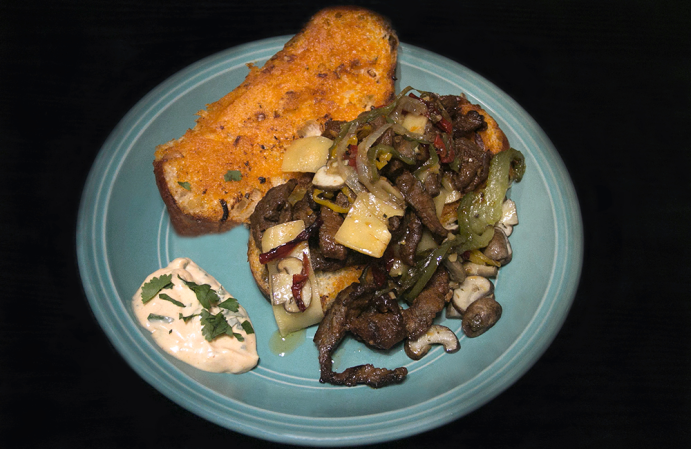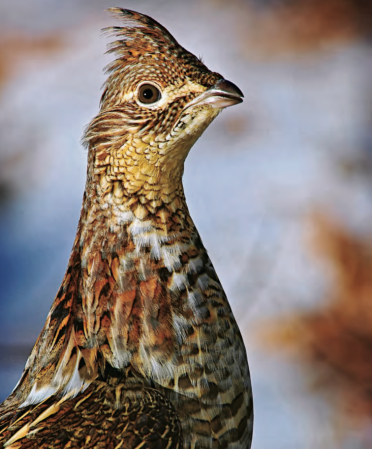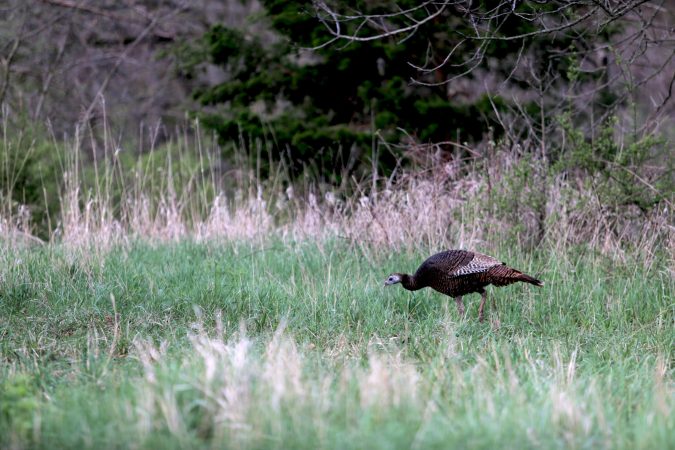Most hunters associate whitetail season with treestand sits over a food plot in the Midwest and East. But some western states—Colorado, Wyoming, Montana, and Idaho—have thriving populations of whitetails, liberal tag allotments, and long seasons.
This has led to more core whitetail bowhunters heading west during deer season. But in order to punch your tag, you have to hunt western deer a bit differently than in the East. There are some similarities in hunting style (it’s the same species no matter where you hunt them), but the landscape in the western U.S. is more open and the agriculture (and native plants deer feed on) differs from what you’ll find in Illinois or Ohio.
If you want to kill a western whitetail, you need to slightly change hunting tactics, but don’t throw out all that you have learned in the whitetail woods. Because those skills will be just as important if you want to arrow a good buck.

1. Western Bucks Use Water as Travel Corridors
In most western locales, big blocks of timber don’t exist, but deer will use trees and brush to keep concealed when they can. A good place to find bucks traveling is along creeks, which are often dotted with cottonwood trees you can hang a treestand from. In some areas there are larger river bottoms where you can find good deer on the move as well. Western whitetails like to travel, especially during the rut, and they use these water systems to do so, just like in the East. It’s also a source of drinking water, which is particularly important in drought years—it condenses deer. The bucks move up and down waterways in search of does during the rut as well. If you can find a tree to hang a stand in, do it. Because deer are going to be moving through these areas, and you can intercept one if you’re willing to make a long sit.
What’s different about this kind of scenario as opposed to hunting in the East or Midwest, is you don’t want to attach yourself to one buck. You’re only waiting for a good buck to come by, and if it does, I suggest shooting it. Here’s why: If you have a hunt club in Pennsylvania, you know all the shooter bucks that are on that property (or most of them). So you’re waiting on seeing specific deer. In the West, you may see a giant 100 yards away on the first day of your hunt and then never see him again. Because the whitetails here are on the move. Don’t get caught up in shooting one buck. It will only lead to disappointment. Pick a good travel corridor with water and fresh sign, hang your stand, and be willing to kill any decent deer that walks by. Unless you’re okay going home empty-handed.
2. Find a Waterhole, and Make a Stand
In many western locations, water is hard to find. This is especially true in drought years. Any kind of water, no matter how small, is a good place to set up a treestand or blind if there is deer sign. Cattle tanks are often overlooked because they don’t show up on digital maps, but deer use them. Also, creek beds that look to be dry often hold pockets of water under the shade of trees. It’s smart to walk these low-lying areas and look for small pools. I guarantee you deer will come to them when water is scarce.
3. Learn to Spot-and-Stalk Western Whitetails
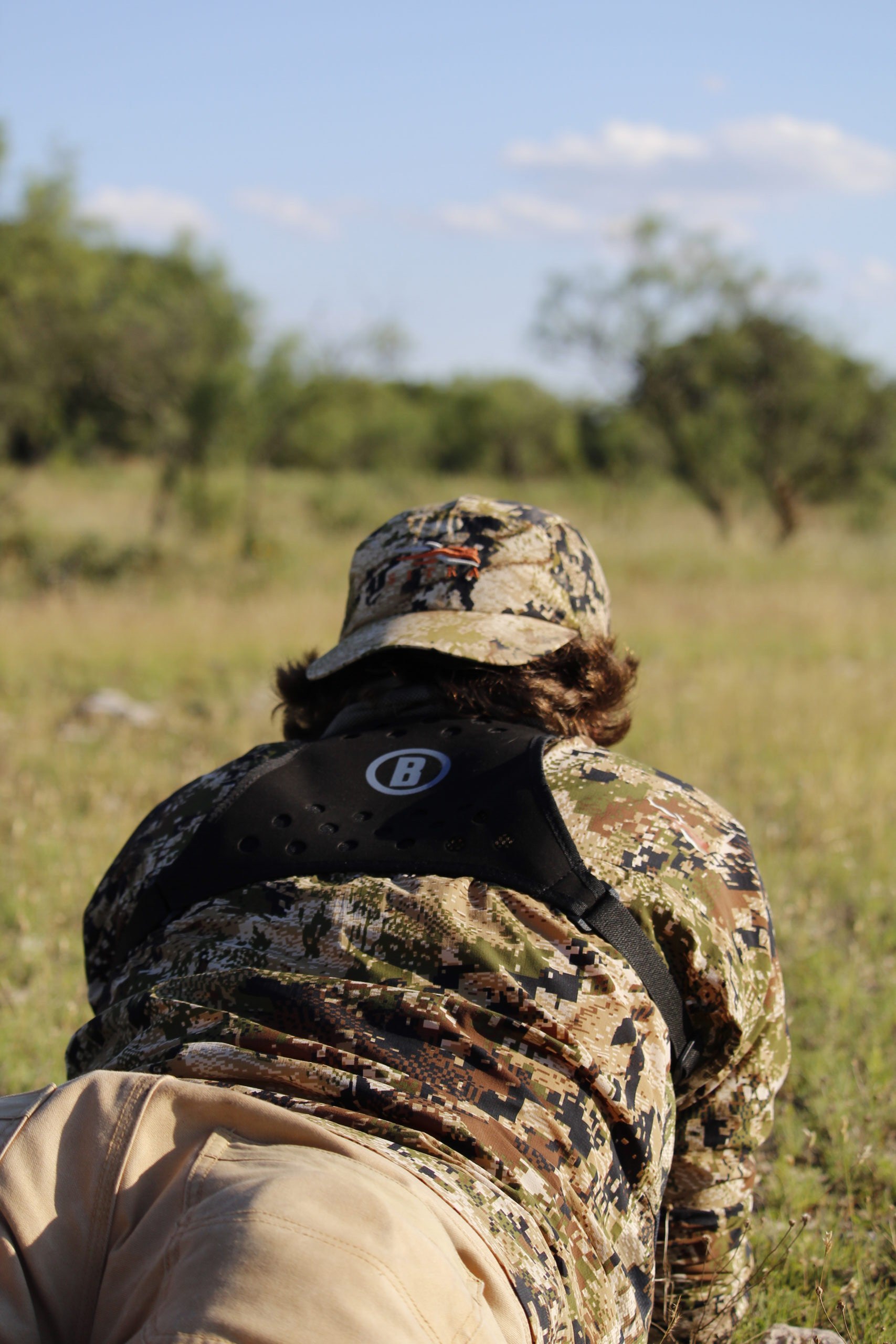
Most treestand deer hunters have never put a stalk on a whitetail. There’s no need for it. But, if you’re going to hunt the West, you must have a ground game. Western whitetails don’t mind being out in the open one bit. So, there will be places—tumbleweed patches, pencil-thin willow thickets, CRP fields—where a treestand or ground blind approach isn’t possible, but a stalk is.
During the early season, use your binos and spotting scope to put bucks to bed as they leave agricultural fields. You’ll hunt these deer just like plains mule deer. You find their bedding area, get out in the field early the next day, and wait for them to feed in the morning. When they return to their beds, that’s when you can make a stalk. You have to be sure the wind is in your favor, so the buck can’t smell you, so take that into account on your approach. Windy days let you get away with making more noise as you get closer to the buck. It’s a waiting game once you get within shooting range of a deer. It’s smart to sit tight until the buck stands up on his own. If you stand and startle the deer, it may sprint away out of its bed and you won’t get a shot. But if you wait for it stand (and he doesn’t know you are there), it will give you more time to draw and make a good shot.
4. Use a Decoy to Draw Bucks Close
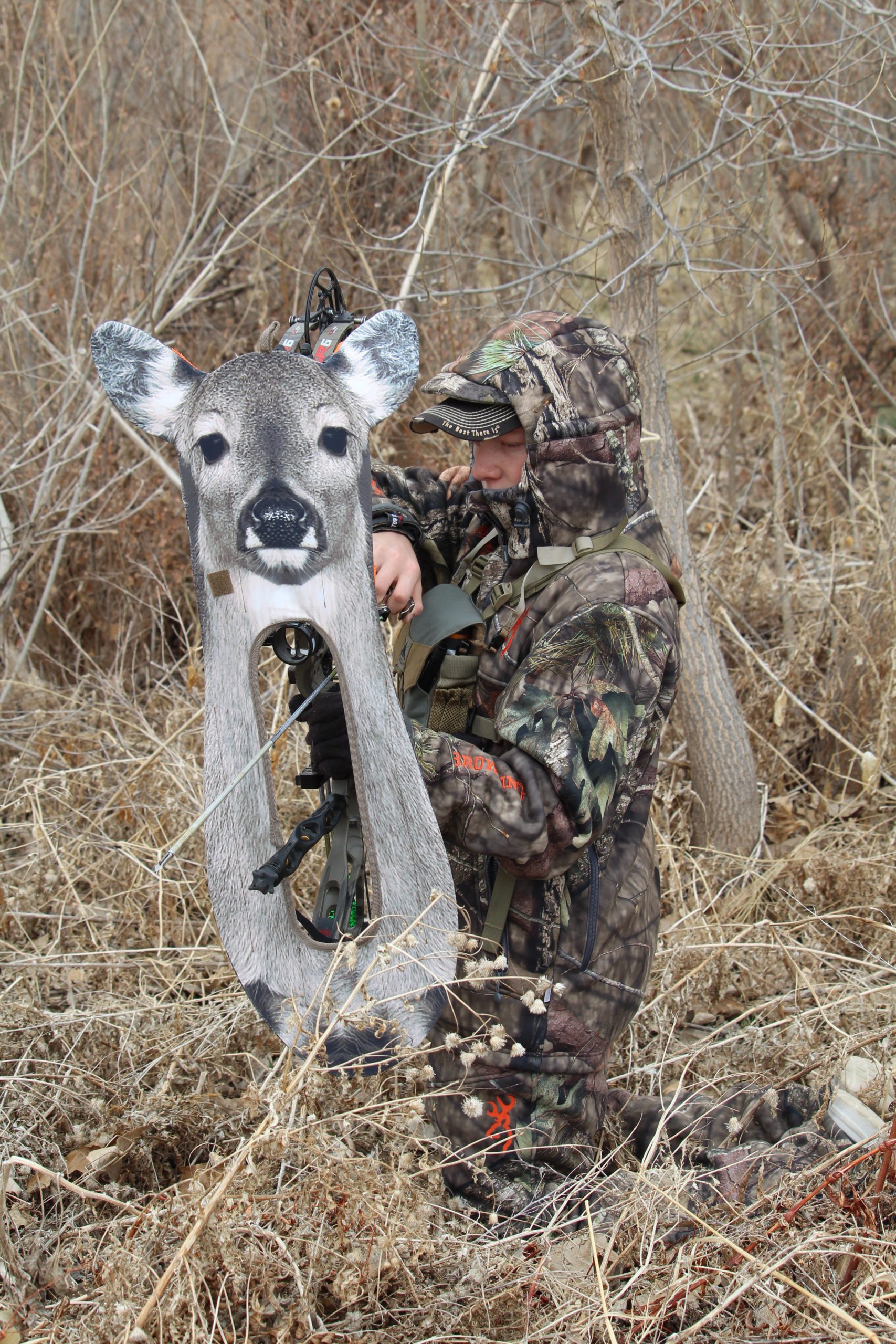
When the rut hits, my go-to tactic for killing a western whitetail is to setup a 3-D buck decoy in an open area where passing bucks can see it. Next, I attach Ultimate Predator Gear’s Stalker Doe to my bow, hide in some weeds, sagebrush, or whatever I can find, 15 yards from the decoy, so it looks like a natural scenario of a buck tending to a doe—rutting bucks can’t resist coming in.
It’s an intense hunt, and don’t worry if it doesn’t pan out the first time you try it, because in my experience you will have many more opportunities even if you blow the first one. The Stalker Doe attaches to your bow’s riser at the limb pockets and has a sizeable shoot-through window. You should practice shooting with the decoy on your bow before the hunt, so you can get a feel for what it will be like when you take the shot for real. You’re not exposed, and a rutting buck won’t know you’re there as long as he doesn’t catch your wind. Move your riser and the doe’s body will also move, or reach up with your hand and twitch an ear. Both tactics add realism and work incredibly well if a buck hangs up.
5. Don’t Be Afraid to Get Down From Your Stand
On the family farm or your deer lease, you have a solid idea of where deer are feeding, bedding, and traveling. You know the best winds to hunt, and base your treestand locations on these factors. Well, in the West, deer movement is less predictable (this is especially true during the rut when deer activity increases).
If you see deer on the move from your stand, you should climb down, and move to them. Western deer often won’t do the same thing each day, so you must adapt. If bucks aren’t walking within bow range of your stand, climb down and try a stalk. In fact, I think of my stand as not just a place I can kill a deer, but also as a scouting position. If I’m up in a tree in the West and see deer, I’ll go after them, which you would never do hunting over a food plot in the Midwest or East.
I’ll slowly get to the ground and stay as low as I can (even crawling on hands and knees once I get close). The key is to move slowly, and not make any noise. Take your time. Be methodical. Better for a deer to leave the area on its own while you are in mid-stalk than to blow it out of that location. And even if the bucks do spook, just back out of the area quietly and find a high point to glass from, or just get back in your treestand. Sure, western bucks move more than eastern whitetails so they could be long gone. But if you’re in a canyon or dried up creek bed that’s full of cedars or other kind of cover deer feel comfortable in, they may not go far. If they don’t you can find them again and try another stalk.
6. It’s Okay to Set Your Treestand Low
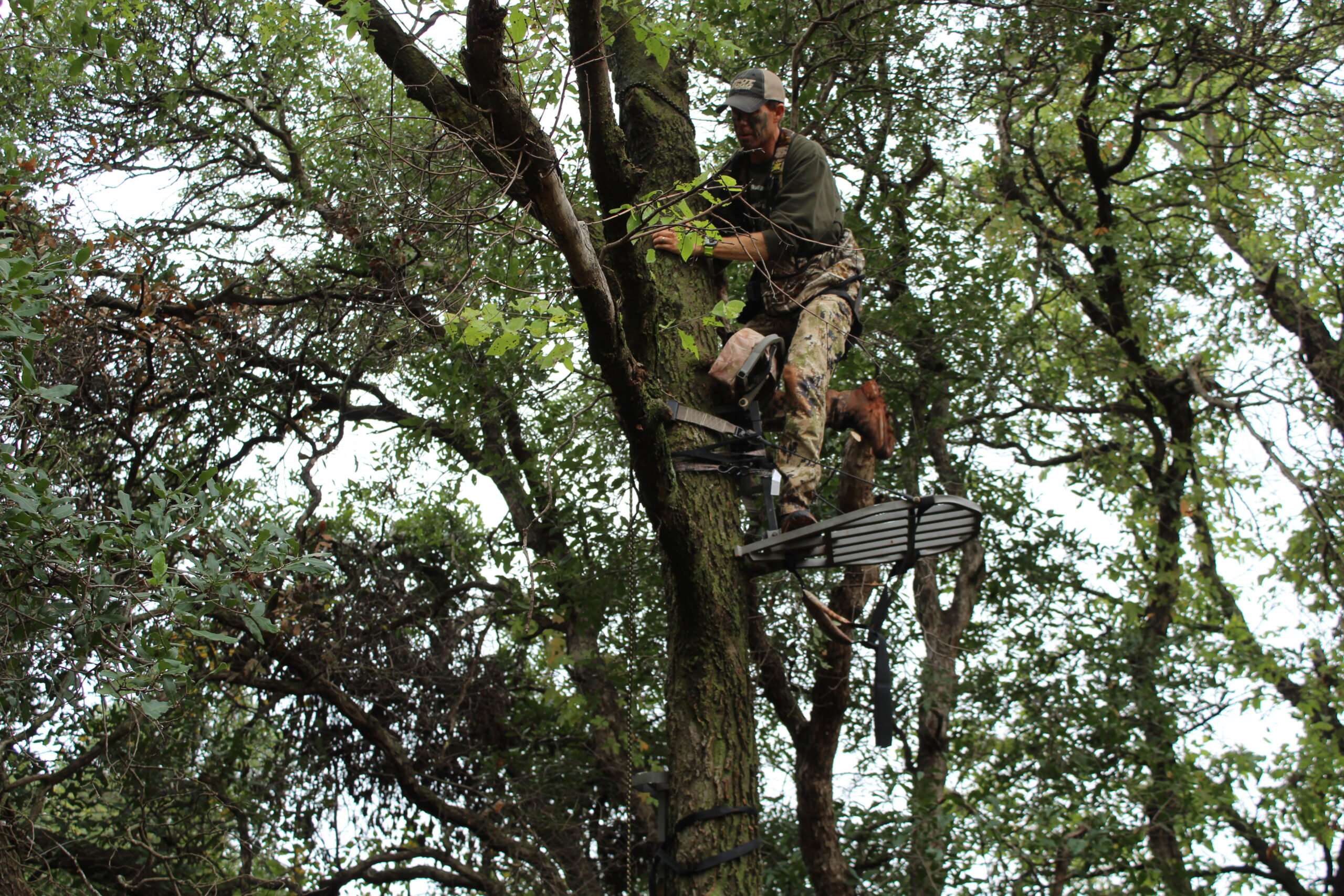
The number of trees you can hang a stand from in the West is limited. And the ones you can hang a stand in generally won’t let you get as high because they are gnarly, or skinny, or just aren’t very tall to begin with. But you don’t need as much elevation to hunt western whitetails. Western deer don’t tend to look up as much as eastern deer do, so if you can only get 1 -feet off the ground, that will be fine (in most cases). I also recommend bringing a tree saddle and a couple of small platform stands that are highly adjustable. Do not bring a climber. There are very few trees you will be able to use one in and it will severely limit your options.
7. Be Ready to Shoot Further
You don’t need to be able to shoot 80 yards out West but being accurate at 60 is beneficial. There are times when you are simply not going to be able to get inside 40 yards on a deer, and if you want to have a chance to tag out, shooting at distance will up your odds.
Whitetails are edgy critters known for ducking arrows, and that can be a real issue when shooting at longer distances because they have more time to react. But I’ve discovered that if I don’t “mep” at a buck to get it to stop, it’s less likely to duck at the sound of an arrow being let loose. I think there’s something that triggers deer to be more wary if you get them to stop when they aren’t ready to. They’re automatically ready to move at the next sound you make, which is fine for a gun hunter, but not when you’re hunting with a bow.
If you’re on a stalk, the key to a good shot is making sure the buck isn’t on alert. Wait till the buck is quartering-away with its head buried in prairie grass (if you can). If you’re stalking a buck in its bed, wait for it to stand. Making a longer shot will require more patience, because you want the buck to be in the best position possible to make a clean kill. What the buck does is out of your control, but the shot you take is not. I’ve see many hunters get impatient and start moving around to entice the deer to stand. Don’t do that. Let the buck make the first move, then react to it.
Read Next: How to Bowhunt Pronghorn, Mule Deer, and Elk from a Treestand
8. Rattle in a Big Buck
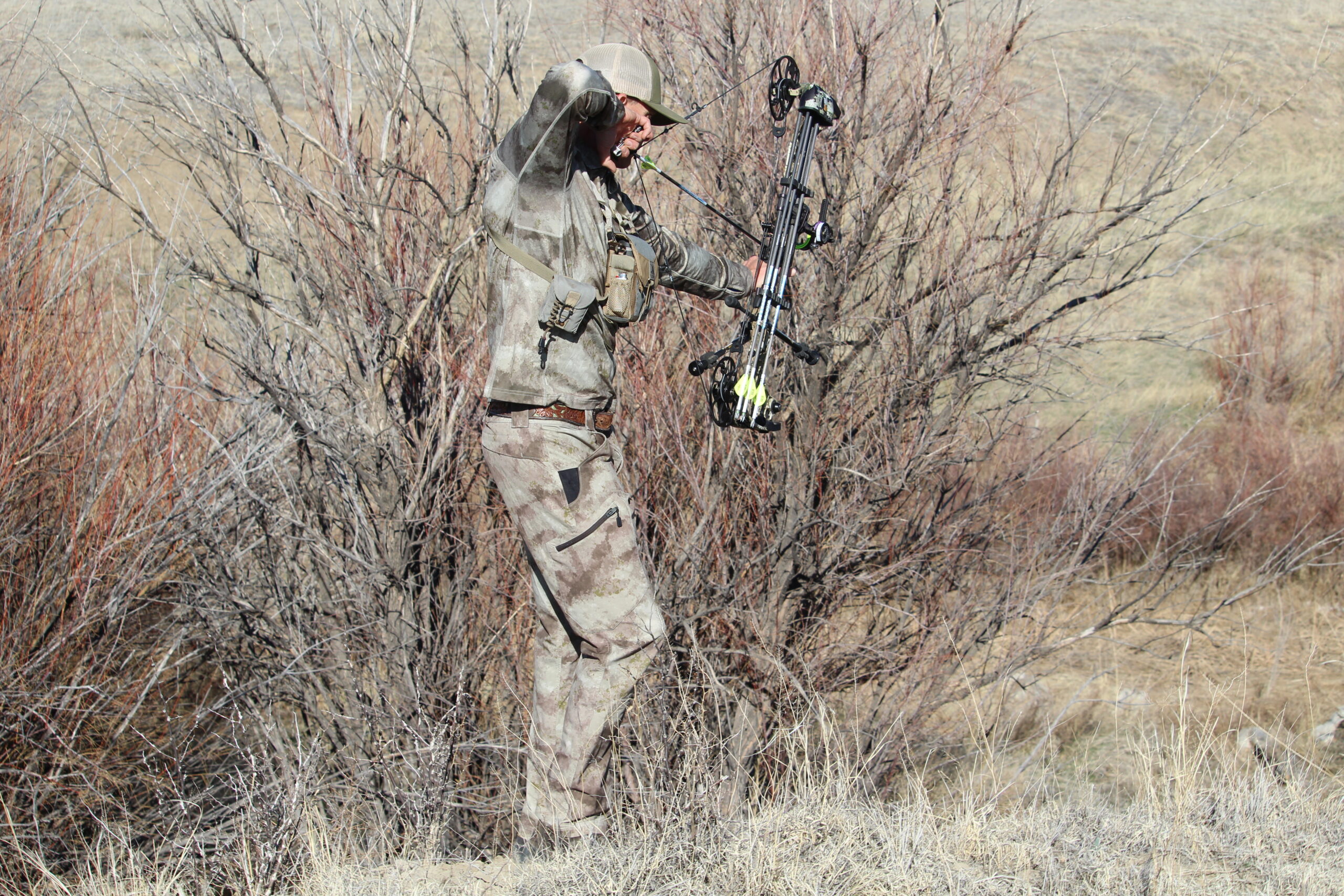
One of the most unique ways to hunt deer on the ground in the West is to smash antlers together and rattle in a mature buck. It mimics two bucks fighting and hopefully draws the attention of any nearby bucks. It’s like when you were on the playground in grade school and two kids started fighting. Everyone stopped what they were doing to run over and take a look. Well, bucks do the same thing.
You need a good hide, and it works best on calm days (bucks will have trouble hearing your rattles if it’s overly windy). You can also add a decoy into the mix so any incoming buck will be focused on that instead of you. It also helps put the buck in a spot you feel most comfortable shooting him in. But just rattling works too. Deer can’t key in on sound as well as turkeys can, so they will pop out into the open and look around. That will give you an opportunity to take a shot. You can use grunts, bleats, and the snort-wheeze to bring in deer as well. Western deer don’t receive the same amount of pressure as Midwest and eastern whitetails, so they are more susceptible to calls. I like to sparingly use a grunt call before I start rattling in a buck. Or, I’ll stop rattling for awhile an then hit a grunt or a snort-wheeze, trying to spark the curiosity of any nearby bucks.
